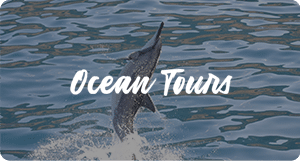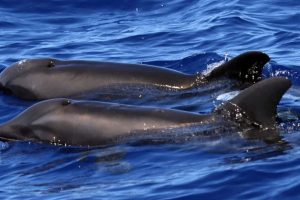If you’ve ever gone snorkeling in Waikiki, there’s a good chance you’ve seen a Hawaiian green sea turtle, also called Honu, gliding peacefully over the reef. But have you ever wondered what Hawaiian honu eat on the reef? Watching them nibble at rocks or munch on floating seagrass might leave you curious about their unique feeding habits.
In this guide, we’ll explore what Hawaiian green sea turtles eat, how their diets change over time, what feeding behaviors you might observe during a Waikiki snorkeling tour, and how you can help protect these amazing marine reptiles.
What’s on the Menu? Sea Turtle Diets by Species
Sea turtles are reptiles, and just like other animals, their diet depends on their species and age. While some sea turtles are herbivores, others are omnivores—or even carnivores!
Here’s a look at what some of the world’s sea turtles eat:
- Green sea turtles: Mostly herbivores as adults. They graze on algae, seaweed, and seagrass.
- Hawksbill turtles: Carnivorous, feeding mainly on sponges and soft-bodied sea creatures.
- Loggerhead turtles: Omnivorous, with strong jaws to crush crabs, mollusks, and jellyfish.
- Leatherback turtles: Specialize in jellyfish. Their throat has backward-pointing spines to keep slippery prey from escaping.
Each species has a different diet that supports their unique lifestyle and anatomy.
 Hawaiian Green Sea Turtles: Reef Grazers in Waikiki
Hawaiian Green Sea Turtles: Reef Grazers in Waikiki
The most common turtle you’ll encounter in Waikiki is the Hawaiian green sea turtle. As adults, they’re primarily herbivores. You might see them grazing on algae that grow on coral rocks or slowly biting into strands of seagrass.
Their beak is shaped perfectly for tearing plant matter. Young green turtles, however, often eat a more varied diet, including small invertebrates, before shifting to a mostly plant-based diet as they mature.
Watching one feed underwater is a calm, almost meditative experience, and it’s a key reason why Waikiki turtle snorkel tours are so popular.
Do Sea Turtles Eat Jellyfish?
Yes! While green sea turtles usually don’t hunt jellyfish, other species—like leatherbacks—do. Leatherback turtles are built for it: their jaws are soft but flexible, and their bodies are adapted for deep dives where jellyfish live in abundance.
Loggerheads and hawksbills may also eat jellyfish occasionally. However, in Hawaii, it’s more common to see herbivorous feeding behavior.
Honu Feeding Behaviors to Watch While Snorkeling
During a Waikiki snorkeling tour, you may observe turtles:
- Grazing algae off coral and rocks
- Hovering near patches of seagrass
- Returning to favorite feeding spots
- Swimming with reef fish who help clean them while they eat
These slow, graceful movements are not only relaxing to watch—they also reveal the honu’s important role in the reef ecosystem.
Respect the Honu: Marine Life Protection & Snorkel Etiquette
It’s important to remember: never touch, chase, or feed a sea turtle. Hawaiian green sea turtles are protected under both federal and state law, including the Endangered Species Act and Hawaii state wildlife regulations.
Touching a turtle can disturb their natural behavior and increase their stress levels. In fact, violating these protections can result in fines of up to $10,000 or more.
✅ Stay at least 10 feet (3 meters) away
✅ Use only reef-safe sunscreen to avoid harming corals and marine animals
✅ Never block a turtle’s path or surround it
By practicing mindful snorkeling, you’re not only protecting the turtles—you’re also helping to sustain Hawaii’s delicate ocean ecosystem.
Why Diet Matters for Honu Conservation
Want to learn how to tell male and female sea turtles apart? Check out our guide on How to Tell Male and Female Sea Turtles Apart for more fascinating turtle facts.
A turtle’s diet isn’t just about nutrition—it affects their habitat, health, and role in the reef ecosystem. Green turtles help control algae levels on coral reefs, which supports reef health. Carnivorous turtles help balance prey populations.
Unfortunately, turtles sometimes mistake plastic for jellyfish or algae, which can be deadly. Learning about their diet helps us understand how to better protect them.
Turtles and You: Sustainable Snorkeling with Hawaiian Green Sea Turtles in Waikiki
If you want to see sea turtles in their natural habitat, feeding and floating along the reef, there’s no better way than joining a Turtles and You eco-snorkel tour.
This sustainable, family-friendly experience takes you to Turtle Canyon, one of Oahu’s best-known snorkeling sites, where Hawaiian green sea turtles gather to be cleaned by reef fish and glide through crystal-clear waters.
🌺 What’s Included in the Tour:
-
Guided snorkeling at Turtle Canyon to swim with Hawaiian green sea turtles (Honu)
-
Snorkeling gear provided (mask, fins, life vest)
-
Complimentary soft drinks (Bar service available onboard; adult beverages available for purchase)
-
Complimentary snack
-
Stunning ocean views and a scenic look at Diamond Head
-
Free original temporary turtle tattoo
-
Professional, CPR-certified guides
-
Hawaiian cultural experience, including hula performance
-
Seasonal sightings of dolphins and humpback whales
-
Optional trolley transportation available (Add-on) – Save $10 per person if you drive yourself to the harbor
We prioritize marine conservation and eco-tourism, ensuring every guest learns about respecting marine life while having fun.
👉 Book your Turtles and You Snorkeling Tour here and make memories that matter—for you and for the ocean!
Want to Learn More About Sea Turtles?
- Curious if sea turtles have teeth? Read our article: Do Sea Turtles Have Teeth?
- Wonder how sea turtles see the underwater world? Check out: Oahu Turtle Eyes












